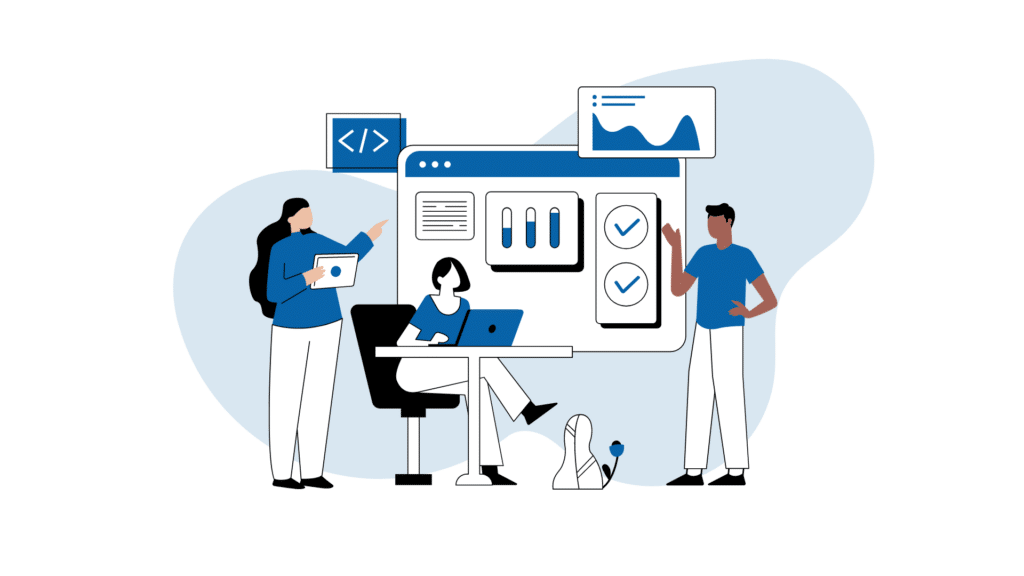
In today’s fast-evolving digital landscape, businesses need dynamic and effective advertising platforms to reach their target audiences. Meta Ads, formerly known as Facebook Ads, have emerged as one of the most powerful tools in the online advertising world. Facebook, Instagram, Messenger, Audience Network, and other platforms have billions of active users. Meta Ads provide organizations unmatched reach, accurate targeting, and quantifiable outcomes.
What Are Meta Ads?
Meta Ads are online advertisements that run across Meta’s suite of platforms. These ads are managed through Meta Ads Manager, an all-in-one tool that allows businesses to create, manage, and track their ad campaigns.
Meta’s ad system is built around three essential campaign objectives:
- Awareness (e.g., brand recognition)
- Consideration (e.g., website traffic, engagement, app installs)
- Conversion (e.g., sales, lead generation)
These objectives help marketers align their goals with the right ad formats and targeting strategies.
Why Choose Meta Ads?

1. Massive Reach
Meta platforms collectively have over 3 billion monthly active users, making it one of the largest ad networks in the world. Whether you’re a local business or a global brand, Meta Ads can connect you with the right audience.
2. Advanced Targeting Options
Granular targeting is one of Meta Ads’ greatest advantages. You can target people based on:
- Demographics (age, gender, location)
- Interests and behaviors (shopping habits, hobbies)
- Custom audiences (past website visitors, email lists)
- Lookalike audiences (users similar to your existing customers)
This precise targeting ensures that your ads reach the people who are most likely to take action.
3. Multiple Ad Formats
To meet diverse objectives, Meta provides a range of ad formats:
- Image Ads: Simple and effective, great for promoting products or offers.
- Video Ads: Ideal for storytelling and increasing engagement.
- Carousel ads: Display several goods or attributes in one advertisement.
- Collection Ads: Great for e-commerce, allowing users to shop directly within the platform.
- Stories Ads: Full-screen mobile ads that appear between user stories on Facebook and Instagram.
4. Detailed Analytics and Reporting
With Meta Ads Manager, businesses can track important metrics like impressions, clicks, conversions, return on ad spend (ROAS), and cost per result. These insights help in making informed decisions and optimizing future campaigns.
How to Create an Effective Meta Ad Campaign

Creating a successful ad campaign on Meta involves a few key steps:
Step 1: Define Your Objective
Don’t be unclear about your goals before you begin. Do you want to drive traffic to your website, increase brand awareness, generate leads, or boost sales? Your objective will guide your ad settings and creative choices.
Step 2: Choose the Right Audience
Use Meta’s targeting features to narrow down your audience. You can also upload your customer list or retarget people who have interacted with your website or app.
Step 3: Select Ad Placement
Meta offers automatic placements (recommended) or manual placements where you can choose where your ads appear—Facebook feed, Instagram stories, Messenger inbox, etc. Automatic placements typically yield better results for the budget.
Step 4: Set Your Budget and Schedule
You can set a daily or lifetime budget. Meta Ads Manager also lets you schedule your campaign to start and end on specific dates or times.
Step 5: Design Your Ad Creative
Your ad creative should be visually appealing and include:
- A compelling image or video
- Clear headline and description
- • Powerful call-to-action (CTA), such as “Sign Up,” “Learn More,” or “Shop Now”
To determine which of your ad versions performs best, use A/B testing, also known as split testing. - Step 6: Monitor and Optimize
Once your ad is live, regularly check performance metrics. Adjust your targeting, creative, or bidding strategy as needed to improve results.
Best Practices for Meta Ads

- Keep it simple: Avoid packing your advertisement with too many images or words.
- Use high-quality visuals: Eye-catching images or videos stop users from scrolling.
- Incorporate storytelling: People connect more with ads that tell a story.
- Test everything: Run A/B tests to see which headlines, images, and CTAs work best.
- Optimize for mobile: A majority of users access Meta platforms on mobile devices.
Cost of Meta Ads
Meta Ads operate on a bidding system, meaning you control how much you’re willing to pay per action or impression. Costs vary depending on your industry, audience, and competition. However, Meta Ads are generally more affordable compared to traditional advertising and offer better ROI due to precise targeting.
On average:
- Cost-per-click (CPC): ₹5 – ₹15 (varies by niche and region)
- Cost-per-thousand-impressions (CPM): ₹50 – ₹300
Common Mistakes to Avoid

- Not defining a clear goal: Without a specific objective, it’s hard to measure success.
- Ignoring analytics: If you’re not checking your results, you can’t improve your ads.
- Poor targeting: Broad or irrelevant targeting can waste your budget.
- Weak creatives: Engagement is decreased by poor images or ambiguous messaging.
conclusion
Any company trying to expand online can benefit greatly from using meta ads. With billions of active users, advanced targeting features, and a variety of ad formats, Meta provides an unmatched platform for digital advertising. Whether you’re a small business or a large enterprise, mastering Meta Ads can drive meaningful results—from building brand awareness to increasing sales.



